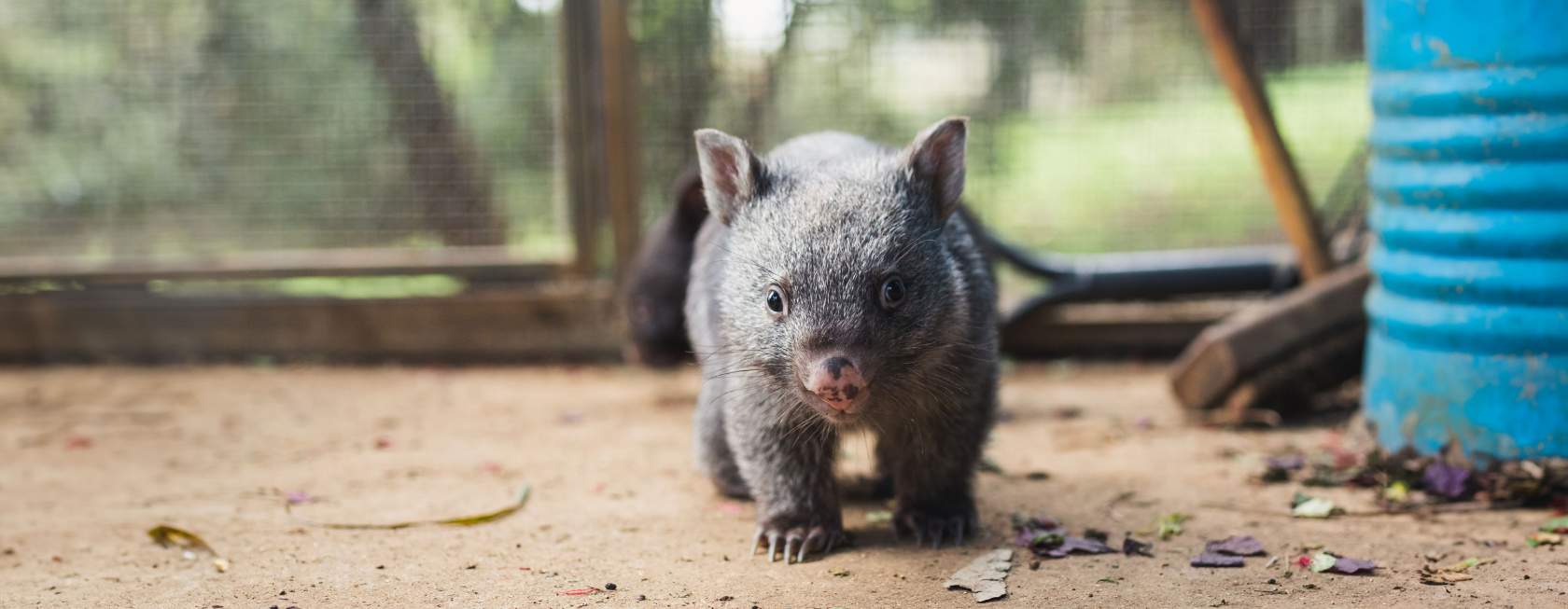
Wombats are an easily recognisable Australian marsupial. The most common wombat species found in Victoria, and which is most reported to Wildlife Victoria’s Emergency Response Service is the common wombat or bare-nosed wombat (Vombatus ursinus).
Other species less commonly found in Victoria are the northern hairy-nosed wombat and the southern hairy-nosed wombat.
Appearance
Wombats are identifiable from their short legs, small ears, and muscular and stocky appearance. An adult may reach a length of one metre and weigh between 20kg and 40kg.
Distribution and habitat
The common wombat is mainly distributed along the south-eastern areas of Victoria.
Wombats live in dug-out burrows that can often be up to 30 metres long below ground. Unlike other marsupials, a female wombat's pouch faces backwards so they do not fill their pouch with dirt when digging a burrow.
Diet
Wombats feed on a mix of herbivorous plants and roots and will also eat bark from native trees.
Behaviour
Wombats are mainly crepuscular (active during dusk and dawn) and nocturnal (active at night) and it’s considered unusual to see them out in daytime. However, in the cooler months, they do take advantage of the lower light to come out and graze.
Breeding season
Breeding may occur at any time throughout the year, though most commonly it is noted to occur between November to July.
Gestation lasts for one month, after which a jelly-bean sized joey is born and attaches to the mother’s teat. The joey will stay in the pouch for approximately 10 months and will then stay with their mother for the next 8 to 10 months.
A female will give birth to a single joey every two to three years.
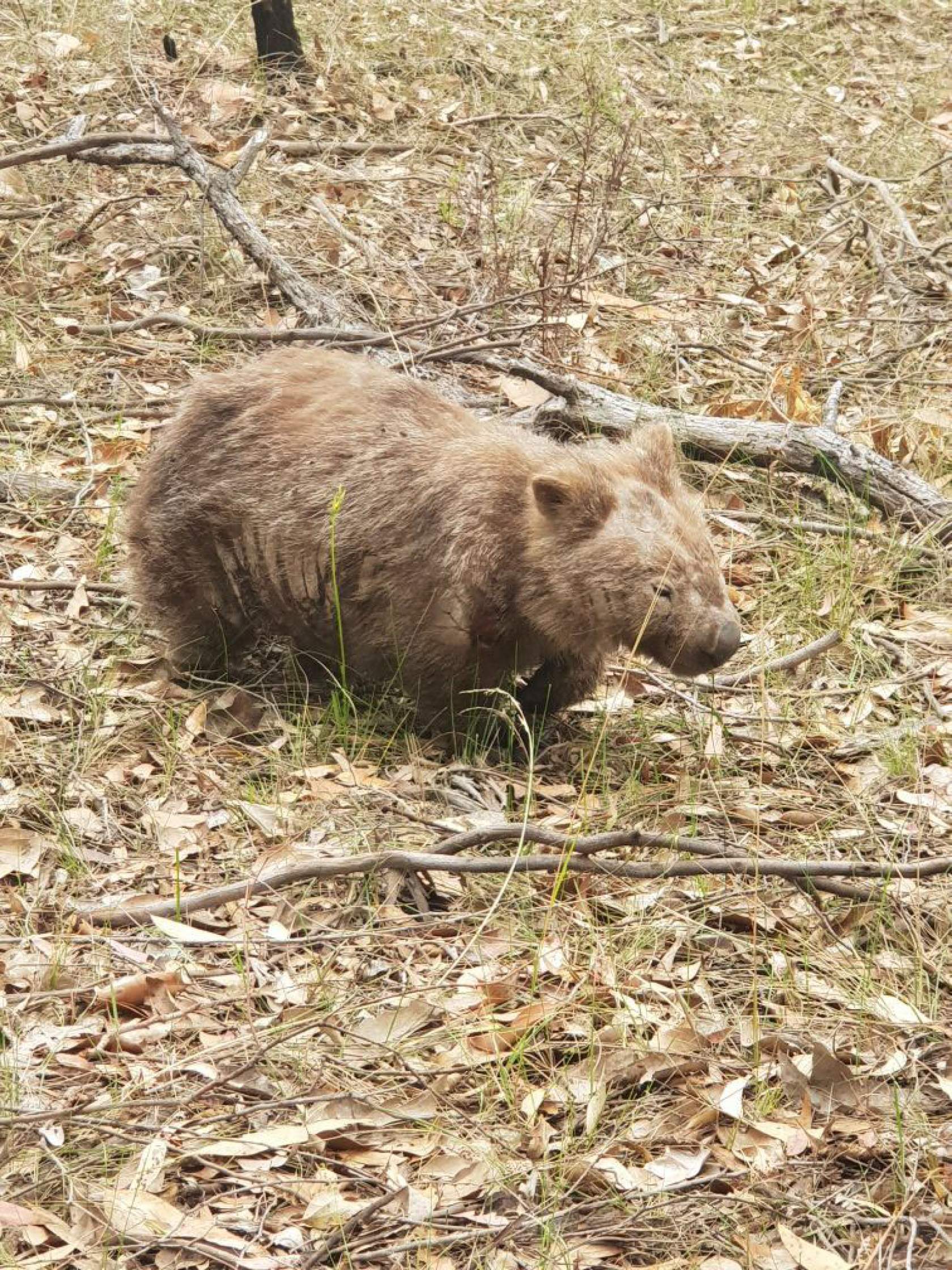
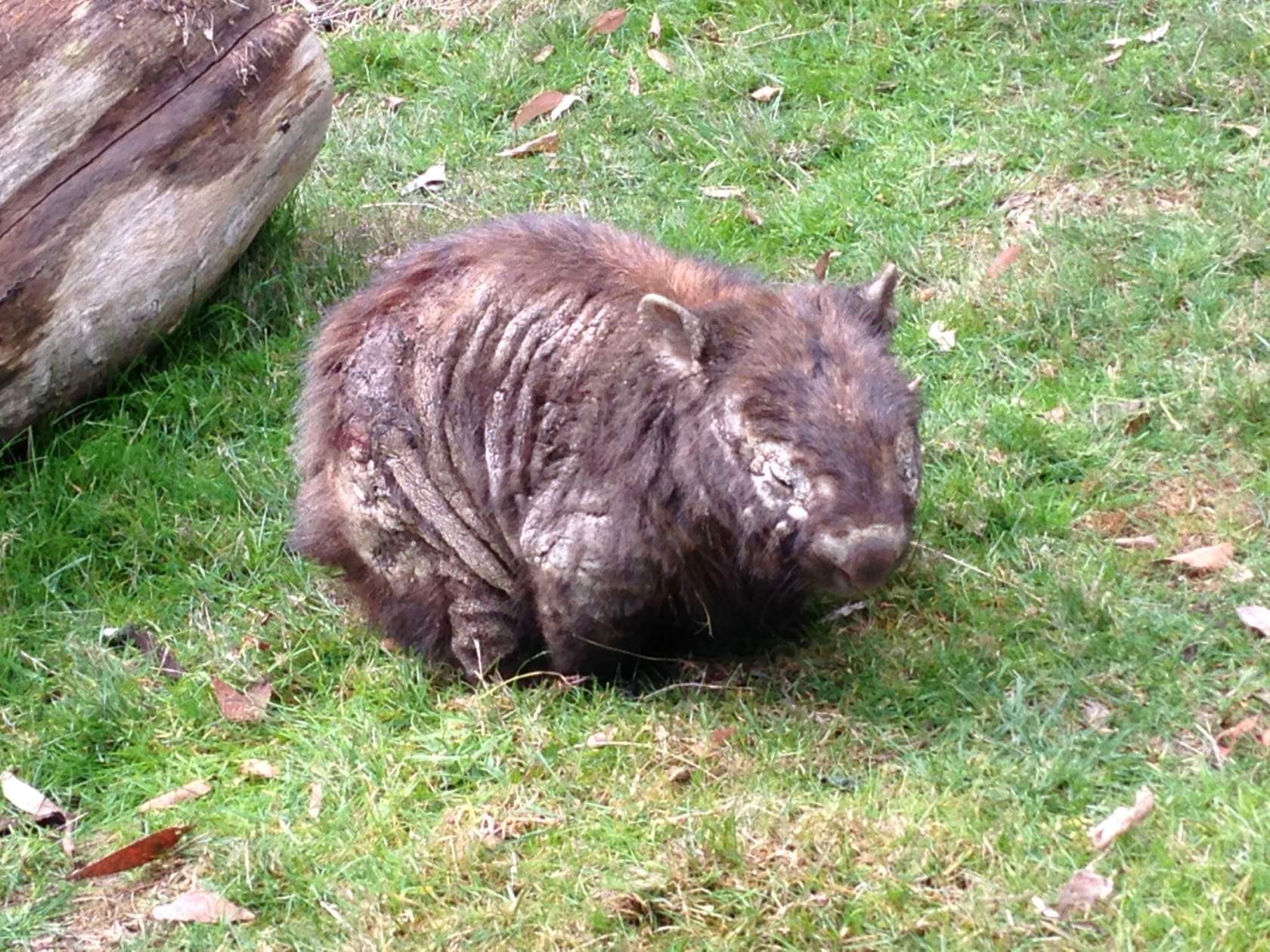
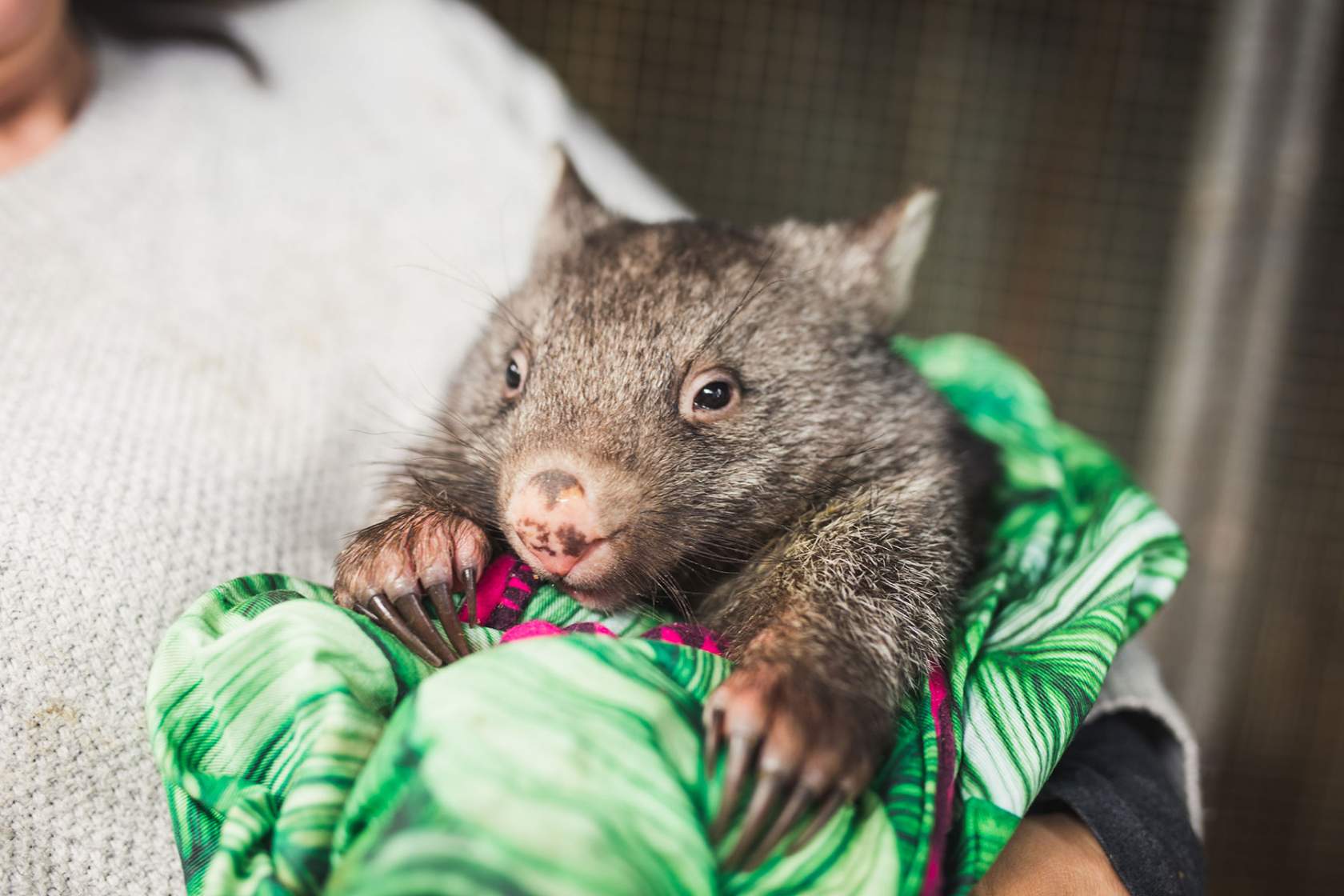
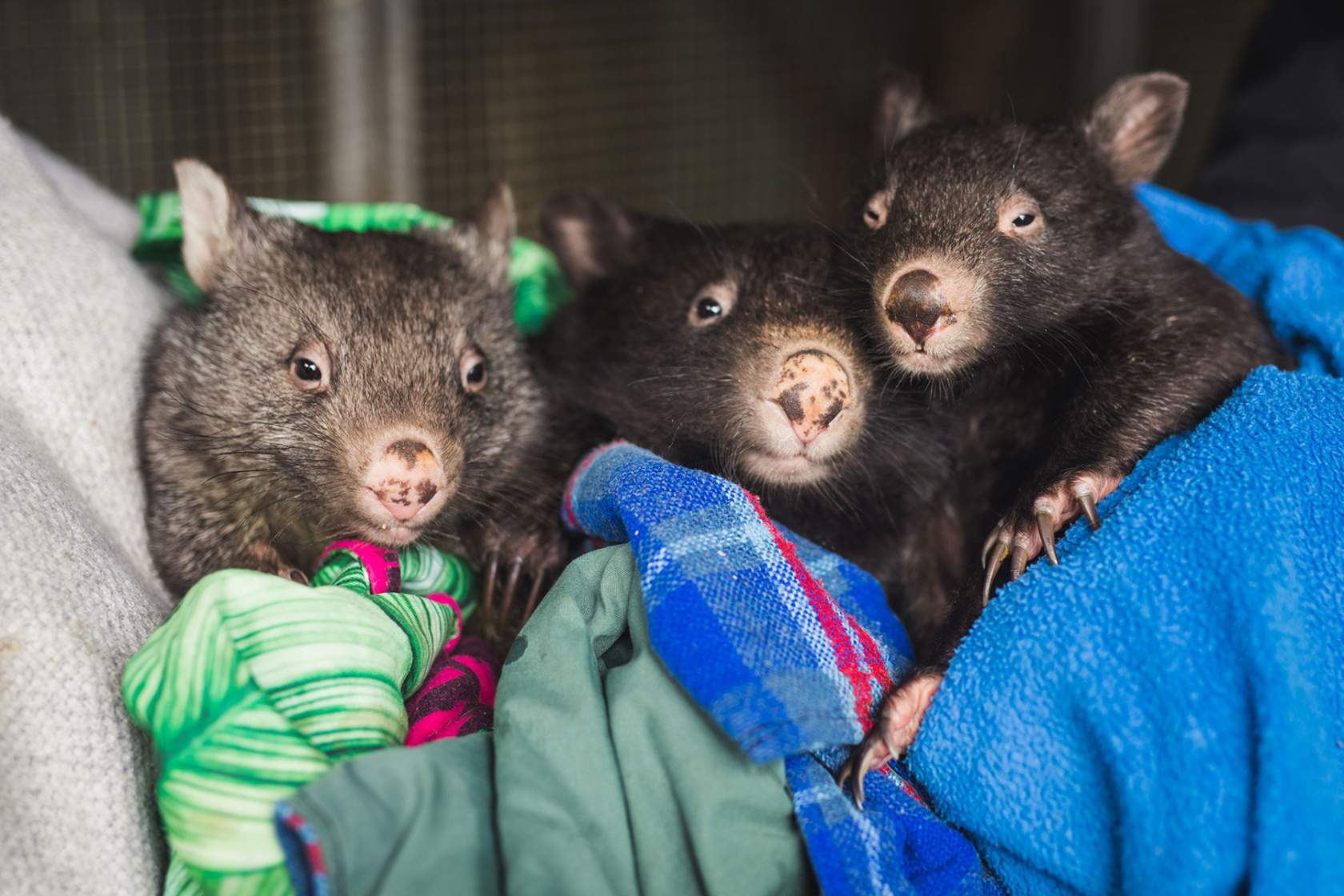

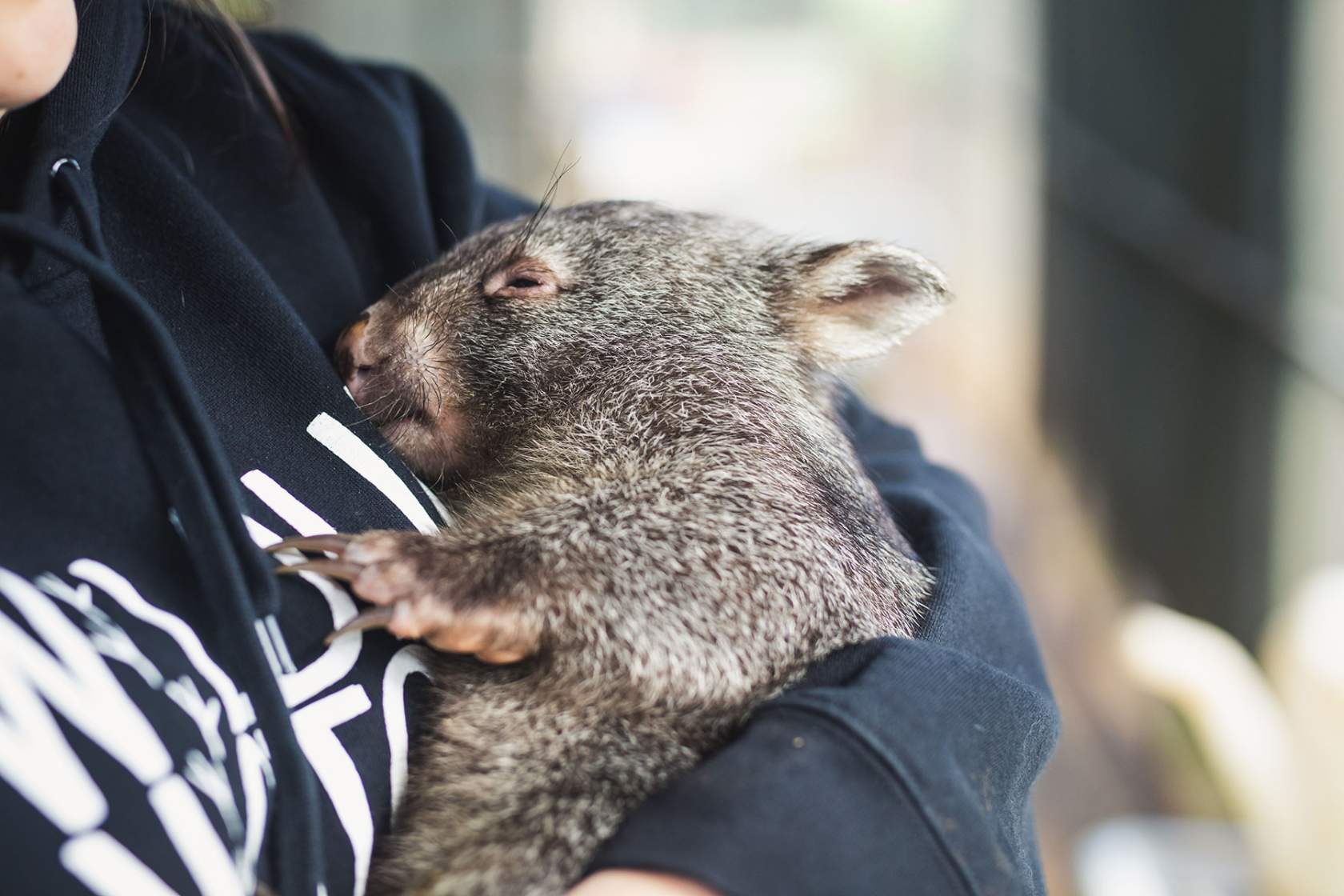
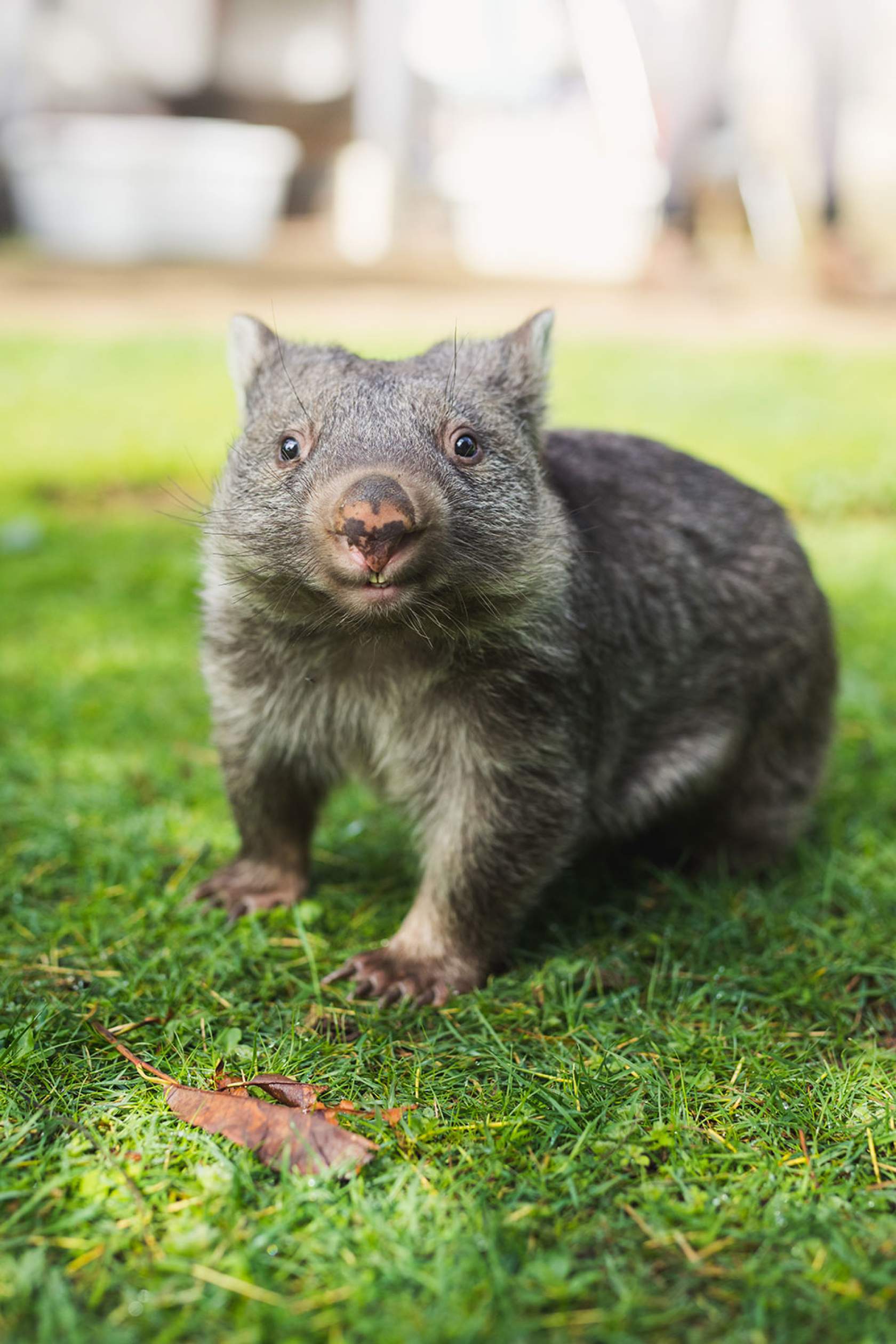

General fun facts
What can you do to help?
The most common wombat reports made to Wildlife Victoria are for wombats being hit by vehicles, and for reports of sick wombats, usually with a disease called mange.
If you see a sick, injured, orphaned or deceased wombat, please call us on (03) 8400 7300.
Wombats are particularly susceptible to a disease called mange. Mange is an infestation of a parasitic mite known as Sarcoptes scabiei. Affected wombats exhibit signs of hair loss, thickened and crusty skin and in the later stages, blindness and deafness. The good news is that mange can be treated in the wild. Wildlife Victoria refers most cases of mange to Mange Management, an organisation of dedicated volunteers who specialise in the treatment of mange in the wild.
Wombats are also commonly reported to our Emergency Response Service having been hit by a vehicle. It’s important for motorists to slow down and stay alert when driving through wombat territory.
As wombats are pouched animals, it is also incredibly important that even deceased wombats are reported to Wildlife Victoria as a joey may be present and may have survived the initial strike.
